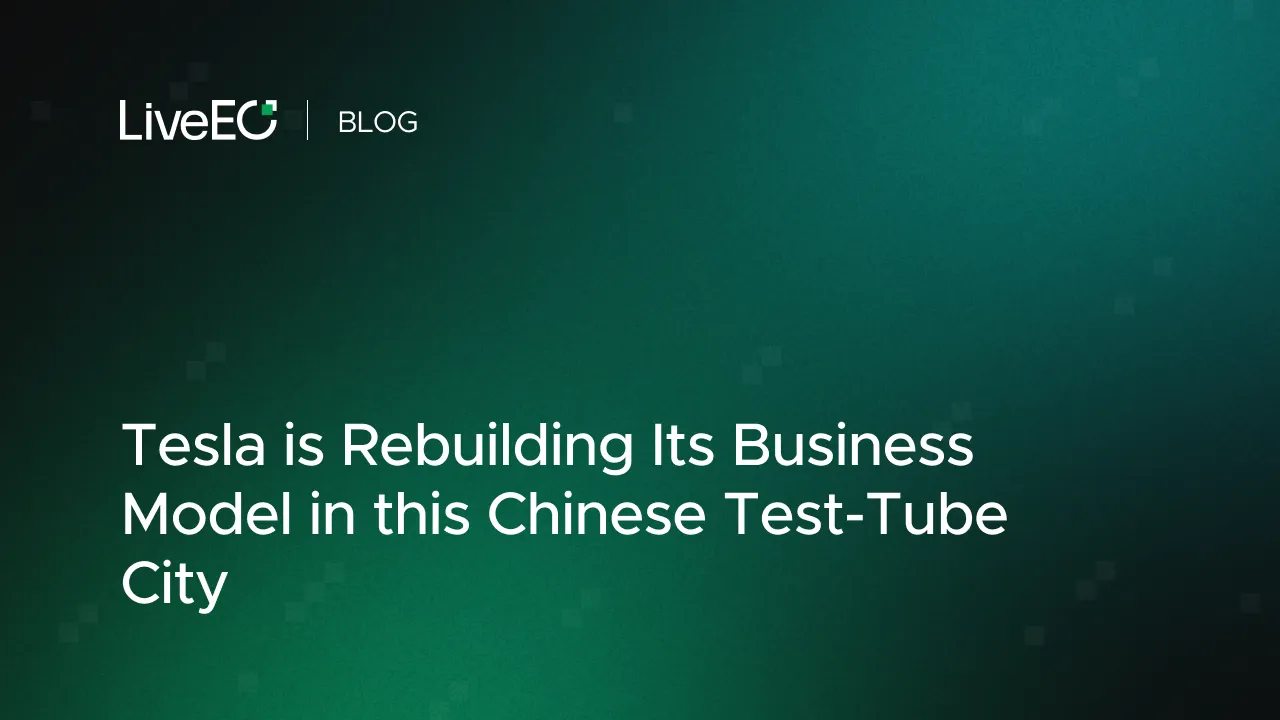“Economy from above” is a collaboration between WirtschaftsWoche and LiveEO. This is a translation of the original article written in German by “Jannik Deters“. Access the original article here.
The next round in the price war for e-cars has begun. On Friday, Tesla announced that it would charge less for the Model 3 and certain versions of its other models "in numerous European markets." The automaker is now offering the Model 3 in Germany for 41,990 euros.
Tesla is one of the most profitable carmakers in the world. The group has never sold as many cars as in the first quarter of 2023. It is not lowering its prices for the first time. Other suppliers have followed suit. But in the long run, such a price war reduces profits. And in China, the world's most important car market, where Tesla generates a fifth of its total sales, the growth in sales figures has recently declined significantly - by 20 percent.
And so Musk has at least one more mission with Tesla. He wants to expand the on-site business model and focus more on battery storage. Over Easter, the entrepreneur and multi-billionaire announced the construction of a new factory for particularly powerful lithium-ion batteries - the Tesla "Megapacks" - in a place where he has already had very good experience: Lingang at the gates of Shanghai.
The Chinese special zone is a test-tube city that is thriving thanks in part to Tesla's investments, as exclusive satellite images from LiveEO now show. Gigafactory 3, the US company's largest and most productive plant, is already located there.
Lingang has now also been chosen by Musk to reduce dependence on the increasing price war in the e-car market. All trade and security policy disagreements, all military threatening gestures between the U.S. and China in the Taiwan conflict notwithstanding. It's a decision that the Republican chairman of the U.S. House of Representatives' Select Committee on the Chinese Communist Party, for example, does not approve of. "I'm concerned about it," Mike Gallagher told the Reuters news agency. "The kind of deals they've done there seem very questionable."
But for Musk, business obviously comes before geopolitics. Speed is what counts for him. And the Chinese have demonstrated this in Lingang. After less than a year of construction, the Tesla factory was up and running in 2019, as the satellite photos show. Apart from a brief pause in production at the start of the corona pandemic, it has been running at full speed ever since. About half of all Tesla cars worldwide come from the factory in the special zone.
The area is part of the Shanghai metropolitan area and is also home to a large part of the metropolis' port. Satellite images clearly show how it will be built as of 2011. Later, mainly rotor blades for wind turbines and cars will be stored here. And as of 2020, lots of Teslas. The Models 3 and Y produced in Giga Shanghai are mainly for the Asian market, but also go to Europe.
Container ships that are too deep for the port basin here head for the deep-water port of Yangshan,a good 30 kilometers to the southeast. Opened in 2005, it is also part of the Port of Shanghai. As for the planned city of Lingang itself, sand had to be filled in and land reclaimed for the deep-water port, as the satellite photos show.
{{inline}}
Yangshan is connected to the mainland by a 32.5-kilometer bridge. Trucks transport containers back and forth. The loading point is a few blocks from the core of the city, which was developed 20 years ago.
The man-made Dishui Lake was the starting point for the new port city, which was planned by Hamburg-based architecture firm gmp. The goal of the Shanghai Urban Planning Department: to curb Shanghai's population and industrial growth. The photos show how the lake is being created and gradually the three islands to the north, west and south are being built on, apartments, hotels and spaces for commerce, culture and leisure are being created.
According to the architects, Lingang is "the only new city foundation of this scale during the last hundred years, besides Chandighar, Brasilia and Canberra." In 2012, the city was renamed Nanhui New City. However, the special zone is still called Lingang. The free trade zone also includes Shanghai International Airport to the north and the Yangshan deep-water port. The advantage: low taxes and facilitation of cross-border trade.
The fact that Tesla is now expanding its energy storage business here, of all places, has more than just the car plant to do with it. Lingang has developed into a location for e-mobility and renewable energies. According to Chinese state media, $62 billion has been invested here in projects for the chip industry and e-cars. The biggest investors are mainly local and state-controlled companies, according to the Bloomberg news agency. The center resembles a ghost town.
Tesla is no more deterred by this than by criticism from U.S. politicians. Musk is already cooperating with Chinese companies such as CATL in the field of battery production. With the latest factory plans, Tesla is "strengthening its diversification away from vehicle manufacturing and more into renewable energy and energy trading," auto expert Philipp Seidel of the consultancy Arthur D. Little told Handelsblatt. He expects the global market for stationary energy storage to grow faster than that for e-cars in the coming years.
Exactly where the new factory will probably be built from the third quarter of this year is not yet known. However, production is expected to start in the second quarter of 2024 and yield 10,000 megapacks per year. That's as many as the only megapack factory in California to date. For Tesla's planned global sales, the nearby port is only too convenient.
The batteries are about the size of shipping containers and can supply power to factories or homes when local grids are heavily loaded or there is a blackout. That's exactly what has been a critical issue in China since several factories were forced to close for days in the fall of 2021 due to power shortages. Some office towers were evacuated for fear that elevators would fail. Meanwhile, some provinces are requiring operators of new solar or wind energy parks to keep enough battery capacity on hand to temporarily store ten to 20 percent of the energy generated.







